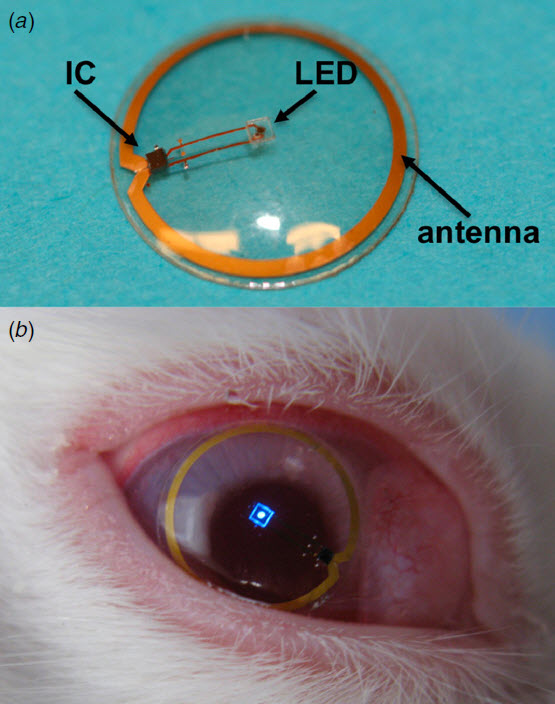
By David Ponce
Researchers from the University of Washington and Aalto University Finland have developed a prototype contact lens that contains a single LED pixel, a custom made integrated circuit and an antenna. They then tried the lens on live rabbits (under general anesthesia for comfort) with no adverse effects.
Awesome!
The display consists of an antenna, a 500 × 500 µm2 silicon power harvesting and radio integrated circuit, metal interconnects, insulation layers and a 750 × 750 µm2 transparent sapphire chip containing a custom-designed micro-light emitting diode with peak emission at 475 nm, all integrated onto a contact lens. The display can be powered wirelessly from ~1 m in free space and ~2 cm in vivo on a rabbit. The display was tested on live, anesthetized rabbits with no observed adverse effect. In order to extend display capabilities, design and fabrication of micro-Fresnel lenses on a contact lens are presented to move toward a multipixel display that can be worn in the form of a contact lens. Contact lenses with integrated micro-Fresnel lenses were also tested on live rabbits and showed no adverse effect.
So yeah, this is very rudimentary but… baby steps, baby steps! And while we don’t expect things to remain at the single-pixel level forever, later iterations will inevitably go up in pixel density very slowly. This means that when the first commercial generations reach the consumer level, it will likely only be for displaying things like text. But as the technology is further developed, we have no doubt that always-on alternate/augmented reality will become possible.
We’re several years away, but there you have it. Barring accidental death, if you’re under 60 today, there’s a good chance you will live to see this happen.
[ Link To Paper ] VIA [ MedGadget ]





